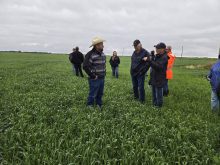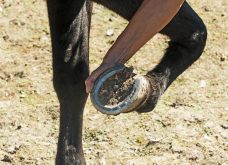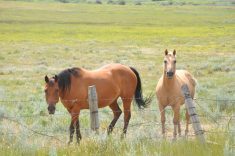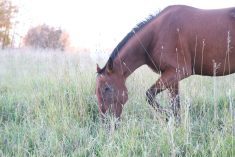One of the most misunderstood feedstuffs in the horse industry today is alfalfa hay. Its position in the feeding program of horses is both revered and spurned. To unravel its benefits and the harms it is necessary to understand the nutrient-rich profile of this hay. When understood, it is the overfeeding of alfalfa hay, not the feeding of alfalfa hay, that becomes detrimental to horses.
It is important to recognize “overfeeding” may occur with a surprisingly small amount of alfalfa hay. Ten to 20 per cent of alfalfa hay in a horse’s diet, like small amounts of grain, can be supplementary, adding specific nutrients. Remember this flux in percentage reflects dietary needs of horses during different stages of life and their vary-ing lifestyles. Horses that are “easykeepers” or struggle with metabolic dysfunctions, such as insulin resistance, Cushing’s or hypothyroidism, do best with no alfalfa at all in their diet.
Read Also
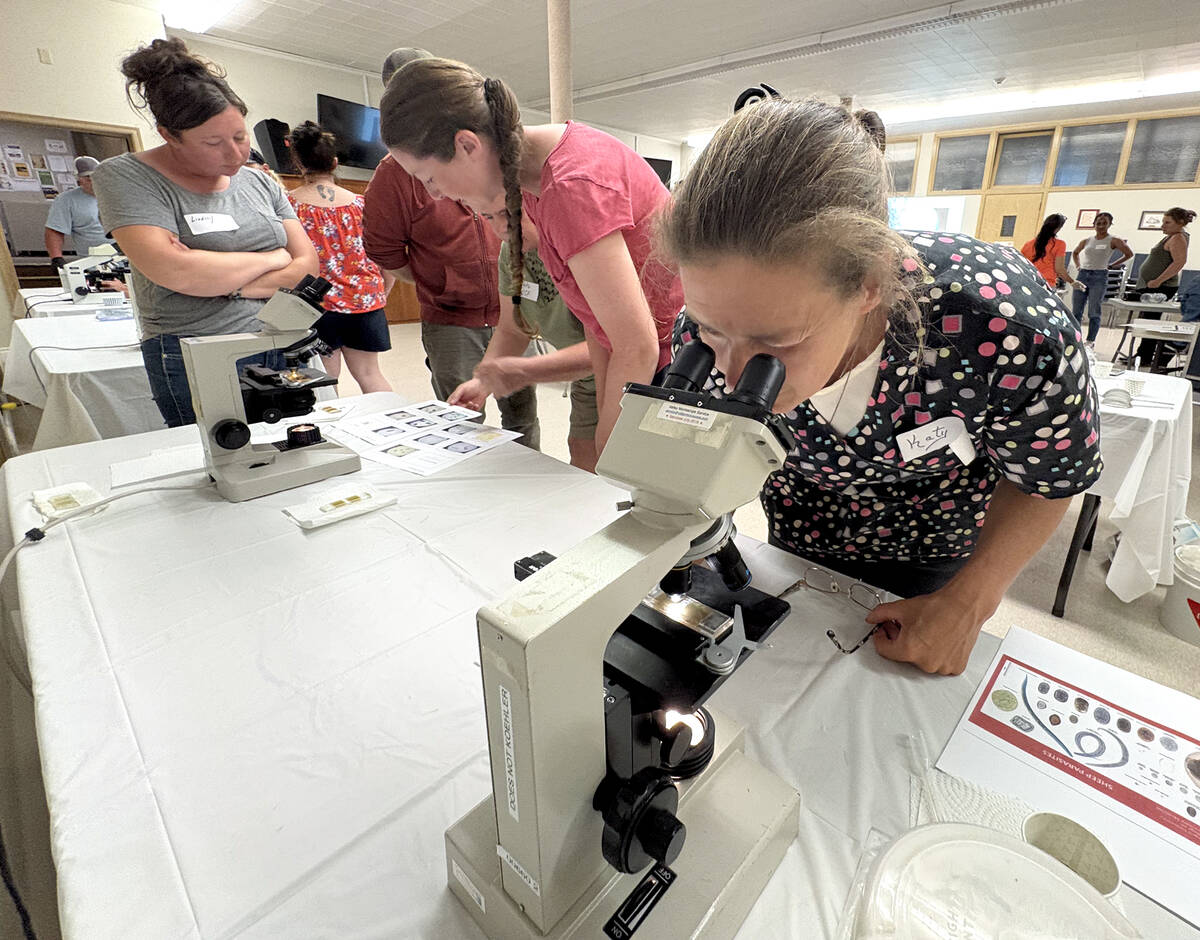
Smart deworming for sheep starts with individual fecal egg counts
Fecal egg count tests are one step to managing dewormer resistance and managing sheep parasites on Canadian sheep farms to maintain flock health.
Good-quality alfalfa hay contains more energy, protein, and calcium, pound for pound, than most grass hays, up to 50 per cent more. These values are readily accessible through a routine forage analysis. In general horses do not need this many calories, nor this much protein or calcium. Furthermore when fed in excess, alfalfa hay becomes a metabolic liability to the horse that suffers ill consequences over time.
Alfalfa hays, depending upon when they are harvested, generally run 18-20 per cent protein content. A mature horse requires eight to 10 per cent protein. When the extra protein is used as an energy source the process produces acidic byproducts. As a consequence the body must call upon its buffering mechanisms to maintain homeostasis. The body will retain water to dilute the acidic byproducts. It will also pull alkalizing minerals from the musculoskeletal system to buffer the acids. Over time, supporting skeletal tissues become demineralized and weakened. Since this process is rarely life threatening, and it takes time for structural unsoundness to become apparent, the connection between unsoundness and diet is rarely made.
Mineral imbalances
The metabolic consequences of “overfeeding” a protein-rich diet are compounded for the horse by the mineral imbalances presented in alfalfa hays. Alfalfa has a high calcium-to-phosphorus ratio, often 4:1 and higher. The ratio in a healthy horse’s diet is 1.5 to 2:1. Whilst it may appear that more calcium is available to the horse, the unbalanced ratio interferes with the body’s abilities to assimilate and process not only calcium but companion minerals such as magnesium.
Magnesium influences how calcium is transported out of the gastrointestinal tract and formed into bone. It also helps control hundreds of enzymatic reactions in cells that influence bone density. As magnesium levels decrease in bone, bone crystals become large and brittle. Inadequate magnesium levels in the blood serum impairs the action of hormones. Magnesium is the relaxation-inducing mineral for both the body and the mind, so deficient horses become tight, sore, and anxious. Calcium imbalances in the diet can lead to thumps, muscle cramps, or tying up. It can also interfere with the absorption of iodine, a mineral necessary for healthy thyroid gland function.
The high energy and protein levels found in alfalfa-based diets of young horses spurs rapid growth of body mass, overburdening an immature skeletal frame. Its calcium imbalance interferes with the levels of phosphorus, magnesium, manganese, zinc, and copper that are biologically available to the growing horse. Bone quality suffers lacking the building blocks for density and substance. Like concrete lacking the strength of rebar, so is for the young horse that is unsound at five or six years of age ailing with various degenerative bone diseases. Structural soundness may not be readily apparent to the naked eye in a young horse, yet becomes apparent over time.
Quality mixed grasses and grass hays are the mainstay of a horse’s diet, supporting health, performance and longevity. These hays closely approximate the horse’s needs. Exercise caution if incorporating alfalfa hays into your horse’s diet being mindful of its nutrient-rich profile.







